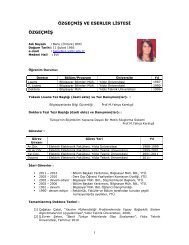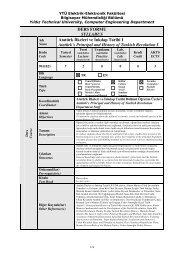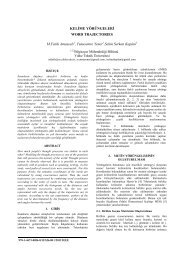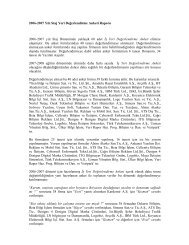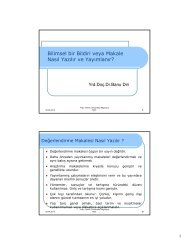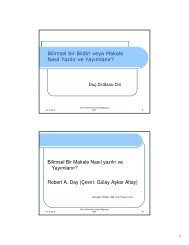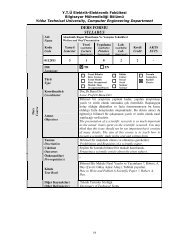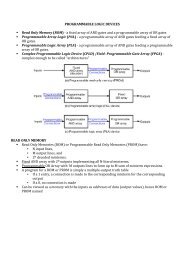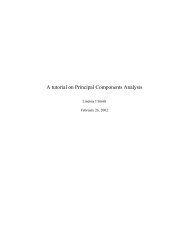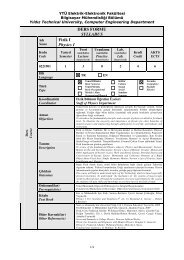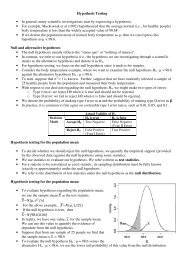You also want an ePaper? Increase the reach of your titles
YUMPU automatically turns print PDFs into web optimized ePapers that Google loves.
– What is the name of the paging data set<br />
– On which direct access storage device (DASD) volume does it reside<br />
z/<strong>OS</strong> can also page out the common storage area (CSA). To see this for yourself, enter the following<br />
command:<br />
D ASM,COMMON<br />
Working with datasets using ISPF<br />
These lab exercises help you develop skills in working with data sets using ISPF. To perform the lab<br />
exercises, you or your team require a TSO user ID and password (for assistance, see the instructor).<br />
Tip: The 3270 Enter key and the PC Enter key can be confused with each other. Most 3270 emulators permit<br />
the user to assign these functions to any key on the keyboard, and we assume that the 3270 Enter function<br />
is assigned to the right-hand CTRL key. Some z/<strong>OS</strong> users, however, prefer to have the large PC Enter key<br />
perform the 3270 Enter function and have Shift-Enter (or the numeric Enter key) perform the 3270 New Line<br />
function.<br />
Exploring ISPF Option 3.4<br />
One of the most useful ISPF panels is Option 3.4. This terminology means, starting from the ISPF primary<br />
option menu, select Option 3 (Utilities) and then Option 4 (Dslist, for data set list). This sequence can be<br />
abbreviated by entering<br />
3.4 in the primary menu, or =3.4 from any panel.<br />
Many ISPF users work almost exclusively within the 3.4 panels. We cover some of the 3.4 functions here and<br />
others in subsequent exercises in this text. Use care in working with 3.4 options; they can effect changes on<br />
an individual or system-wide basis.<br />
z/<strong>OS</strong> users typically use ISPF Option 3.4 to check the data sets on a DASD volume or examine the<br />
characteristics of a particular data set. Users might need to know:<br />
• What data sets are on this volume<br />
• How many different data set types are on the volume<br />
• What are the DCB characteristics of a particular file<br />
Let’s answer these questions using WORK02 as a sample volume, or another volume as specified by your<br />
instructor:<br />
1. In the 3.4 panel, enter WORK02 in the Volume Serial field. Do not enter anything on the<br />
Option==> line or in the Dsname Level field.<br />
2. Use PF8 and PF7 to scroll through the data set list that is produced.<br />
3. Use PF11 and PF10 to scroll sideways to display more information. This is not really scrolling in<br />
this case; the additional information is obtained only when PF11 or PF10 is used.<br />
The first PF11 display provides tracks, percent used, XT, and device type. The XT value is the<br />
number of extents used to obtain the total tracks shown. The ISPF utility functions can<br />
determine the amount of space actually used for some data sets and this is shown as a<br />
percentage when possible.<br />
The next PF11 display shows the DCB characteristics: DSORG, RECFM,<br />
LRECL, and BLKSIZE.<br />
PS<br />
Sequential data set (QSAM, BSAM)<br />
PO<br />
Partitioned data set<br />
VS<br />
VSAM data set<br />
blank<br />
Unknown organization (or no data exists)<br />
RECFM, LRECL, and BLKSIZE should be familiar. In some cases, usually when a standard<br />
access method is not used or when no data has been written, these parameters cannot be<br />
determined. VSAM data sets have no direct equivalent for these parameters and are shown as<br />
question marks.<br />
Look at another volume for which a larger range of characteristics can be observed. The<br />
instructor can supply volume serial numbers. Another way to find such a volume is to use<br />
option 3.2 to find where SYS1.PARMLIB resides, then examine that volume.<br />
Allocating a data set with ISPF 3.2<br />
ISPF provides a convenient method for allocating data sets. In this exercise, you create a new library that<br />
you can use later in the <strong>course</strong> for storing program source data. The new data sets should be placed on the<br />
WORK02 volume and should be named yourid.LIB.SOURCE (where yourid is your student user ID).<br />
For this exercise, assume that 10 tracks of primary space and 5 tracks for secondary extents is sufficient, and<br />
that 10 directory blocks is sufficient. Furthermore, we know we want to store 80-byte fixed-length records in<br />
the library. We can do this as follows:<br />
5



